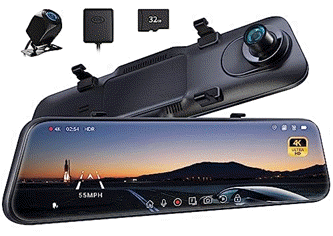Davey Winder, Senior Contributor
2025-07-27 09:53:00
www.forbes.com
Discconnect now, FBI warns 10 million Android users.
Update, July 27, 2025: This story, originally published on July 25, has been updated with a statement from the researchers who disclosed and disrupted the BadBox2 operation that the FBI and Google are tackling head-on, along with news of another, as yet unnamed, global botnet-related threat.
In March, I reported that one of the largest botnets of its kind ever detected had impacted over a million Android devices. That massive attack was known as BadBox, but it has now been eclipsed by BadBox 2.0, with at least 10 million Android devices infected. Google has taken action to protect users as best it can, as well as launching legal action against the attackers, and the FBI has urged impacted users to disconnect their devices from the internet. Here’s what you need to know.
The FBI, Google And Others Warn Of Android BadBox 2.0 Attacks
The FBI cybersecurity alert, I-060525-PSA, could not have been clearer: ongoing attacks are targeting everything from streaming devices, digital picture frames, third-party aftermarket automobile infotainment systems and other assorted home smart devices. The devices, all low-cost and uncertified, mostly originating in China, allow attackers to access your home network and beyond by, the FBI warned, “configuring the product with malicious software prior to the user’s purchase.” It has also been noted, however, that mandatory “software updates” during the installation process can also install a malicious backdoor.
Point Wild’s Threat Intelligence Lat61 Team reverse-engineered the BadBox 2 infection chain and, as a result, uncovered new indicators of compromise that have been shared with global Computer Emergency Response Teams, as well as law enforcement. “This Android-based malware is pre-installed in the firmware of low-cost IoT devices, smart TVs, TV boxes, tablets, before they even leave the factory,” Kiran Gaikwad from the LAT61 team said, “It silently turns them into residential proxy nodes for criminal operations like click fraud, credential stuffing, and covert command and control (C2) routing.”
Google, meanwhile, confirmed in a July 17 statement that it had “filed a lawsuit in New York federal court against the botnet’s perpetrators.” Google also said that it has “updated Google Play Protect, Android’s built-in malware and unwanted software protection, to automatically block BadBox-associated apps.”
Human Security Behind Initial BadBox 2.0 Disclosure And Disruption
Human Security, whose Satori Threat Intelligence and Research Team originally both disclosed and disrupted the BadBox 2.0 threat campaign, said at the time that researchers believed “several threat actor groups participated in BadBox 2.0, each contributing to parts of the underlying infrastructure or the fraud modules that monetize the infected devices, including programmatic ad fraud, click fraud, proxyjacking, and creating and operating a botnet across 222 countries and territories.” If nothing else, that provides some context to the scale of this campaign.
Now, Stu Solomon, the Human Security CEO, has issued the following statement: “We applaud Google’s decisive action against the cybercriminals behind the BadBox 2.0 botnet our team uncovered. This takedown marks a significant step forward in the ongoing battle to secure the internet from sophisticated fraud operations that hijack devices, steal money, and exploit consumers without their knowledge. Human’s mission is to protect the integrity of the digital ecosystem by disrupting cybercrime at scale, and this effort exemplifies the power of collective defense. We’re proud to have been deeply involved in this operation, working in close partnership with Google, TrendMicro, and the Shadowserver Foundation. Their collaboration has been invaluable in helping us expose and dismantle this threat.”
Another Global Botnet Attack Emerges — What You Need To Know
A new report, initiated by Jeff Golden, lead software engineer at GreyNoise and supported by the GreyNoise research team, has confirmed another global botnet operation to worry about. The investigation was prompted by a small region on the intelligence map that was lighting up with activity that all showed the same fingerprint: a Telnet brute-forcer, generic default password attempts against an internet of things device, and a hardcoded Telnet attempt for good measure. An AI-powered analysis by the GreyNoise research team quickly identified that the systems involved were all VoIP-enabled devices. “Using GreyNoise tags, behavioral similarity, and Telnet traffic patterns,” the GreyNoise report stated, “we identified about 500 IPs globally exhibiting similar traits.”
The security researchers suggested that, as VoIP devices frequently operate on old Linux-based firmware, and often have Telnet exposed by default, they are rife for vulnerability-based attack surface threats. These VoIP devices can, the report said, often be internet-facing, lightly monitored (if at all) and infrequently patched. “While we did not confirm exploitation of that CVE in this case,” the researchers explained, “the activity reinforces a broader point: Vulnerabilities remain part of the attack surface long after disclosure.”
And all of this matters, according to GreyNoise, because VoIP systems are so often overlooked during security monitoring operations. Not just by users, but by small utilities and internet service providers who may “unknowingly contribute infrastructure to global botnets.” The botnet in question, likely Mirai-related, is nearly always opportunistic and will be exploited wherever it can. Which is why defenders should be sure to audit Telnet exposure, especially on VoIP-enabled systems, and “rotate or disable default credentials on edge and SOHO devices,” the GreyNoise research team recommended.
FBI Recommendations And BadBox 2.0 Mitigations — Disconnect Your Devices Now
The FBI has recommended that Android users should be on the lookout for a number of potential clues that your Chinese-manufactured smart device could be infected with BadBox 2.0 malware.
- Any requirement for Google Play Protect services to be disabled.
- Any streaming devices that are advertised as being fully unlocked or capable of delivering completely free content.
- Any devices that come from unrecognized brands.
- The use of unknown and unofficial app marketplaces, where software must be downloaded during setup.
- Any unexplained or suspicious internet traffic.
When it comes to mitigation, the advice is straightforward: users should “consider disconnecting suspicious devices from their networks,” the FBI said.
Enhance your driving experience with the P12 Pro 4K Mirror Dash Cam Smart Driving Assistant, featuring Front and Rear Cameras, Voice Control, Night Vision, and Parking Monitoring. With a 4.3/5-star rating from 2,070 reviews and over 1,000 units sold in the past month, it’s a top-rated choice for drivers. The dash cam comes with a 32GB Memory Card included, making it ready to use out of the box. Available now for just $119.99, plus a $20 coupon at checkout. Don’t miss out on this smart driving essential from Amazon!
Help Power Techcratic’s Future – Scan To Support
If Techcratic’s content and insights have helped you, consider giving back by supporting the platform with crypto. Every contribution makes a difference, whether it’s for high-quality content, server maintenance, or future updates. Techcratic is constantly evolving, and your support helps drive that progress.
As a solo operator who wears all the hats, creating content, managing the tech, and running the site, your support allows me to stay focused on delivering valuable resources. Your support keeps everything running smoothly and enables me to continue creating the content you love. I’m deeply grateful for your support, it truly means the world to me! Thank you!
|
BITCOIN
bc1qlszw7elx2qahjwvaryh0tkgg8y68enw30gpvge Scan the QR code with your crypto wallet app |
|
DOGECOIN
D64GwvvYQxFXYyan3oQCrmWfidf6T3JpBA Scan the QR code with your crypto wallet app |
|
ETHEREUM
0xe9BC980DF3d985730dA827996B43E4A62CCBAA7a Scan the QR code with your crypto wallet app |
Please read the Privacy and Security Disclaimer on how Techcratic handles your support.
Disclaimer: As an Amazon Associate, Techcratic may earn from qualifying purchases.




















































































![Ufo [DVD]](https://techcratic.com/wp-content/uploads/2025/07/71joKqbm4NL._SL1500_-360x180.jpg)



![Alien: Romulus [DVD]](https://techcratic.com/wp-content/uploads/2025/07/71QV-ZOB2L._SL1500_-360x180.jpg)

















